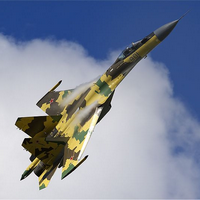The Russian government recently announced its goals for Russia's rearmament, with a shopping list that includes 100 ships, 600 airplanes, and 1,000 helicopters over the course of the coming decade. Although these figures make for spectacular headlines, they give a misleading impression of the extent of Russia's likely military buildup.
First Deputy Defense Minister Vladimir Popovkin, who is in charge of arms procurement, confirmed that the Ministry of Defense (MOD) envisages spending roughly $650 billion from 2011-2020 for its new State Armaments Program (SAP), which also includes more than $100 billion for the other Russian security services outside the MOD. In line with President Dmitry Medvedev's goal of raising the share of modern weapons in the Russian military from an estimated 10 percent now to 30 percent by 2015 and 70-80 percent by 2020, approximately 80 percent of these MOD funds are to go toward purchasing weapons, while 10 percent will support scientific research.
Some of the weapons that Russia plans to acquire during the new SAP could substantially boost Russia's military capabilities. These include several French-made Mistral-class amphibious assault ships for the navy as well as a dozen multipurpose attack submarines of the Yasen, Lada and Kilo class. The Strategic Forces will continue to replace retiring Soviet-era SS-18 and SS-19 heavy ICBMs with Russian-made single-warhead SS-27 (Topol-M) and multiwarhead RS-24 ICBMs. The Defense Ministry would also like to research and develop a new MIRVed liquid-fuel ICBM several times larger than the Topol-M and its RS-24 variant. The warplanes the MOD is ordering include 26 new MiG-29KUB carrier-based fighters for the navy. The air force is supposed to receive dozens of modern fourth-generation Su-34 fighter bombers, Su-35BM air superiority fighters, Il-476 transport aircraft and the new fifth-generation T-50, designed with stealth capabilities to counter the F-22 Raptor.

